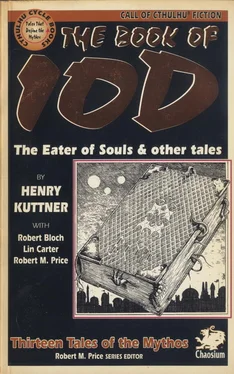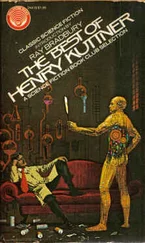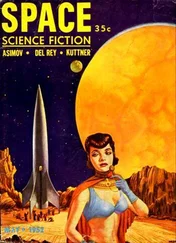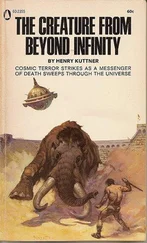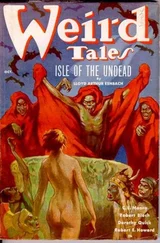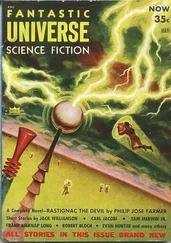Henry Kuttner - The Book of Iod
Здесь есть возможность читать онлайн «Henry Kuttner - The Book of Iod» весь текст электронной книги совершенно бесплатно (целиком полную версию без сокращений). В некоторых случаях можно слушать аудио, скачать через торрент в формате fb2 и присутствует краткое содержание. Год выпуска: 1995, ISBN: 1995, Издательство: Chaosium, Жанр: Ужасы и Мистика, на английском языке. Описание произведения, (предисловие) а так же отзывы посетителей доступны на портале библиотеки ЛибКат.
- Название:The Book of Iod
- Автор:
- Издательство:Chaosium
- Жанр:
- Год:1995
- ISBN:9781568820453
- Рейтинг книги:5 / 5. Голосов: 1
-
Избранное:Добавить в избранное
- Отзывы:
-
Ваша оценка:
- 100
- 1
- 2
- 3
- 4
- 5
The Book of Iod: краткое содержание, описание и аннотация
Предлагаем к чтению аннотацию, описание, краткое содержание или предисловие (зависит от того, что написал сам автор книги «The Book of Iod»). Если вы не нашли необходимую информацию о книге — напишите в комментариях, мы постараемся отыскать её.
The Book of Iod — читать онлайн бесплатно полную книгу (весь текст) целиком
Ниже представлен текст книги, разбитый по страницам. Система сохранения места последней прочитанной страницы, позволяет с удобством читать онлайн бесплатно книгу «The Book of Iod», без необходимости каждый раз заново искать на чём Вы остановились. Поставьте закладку, и сможете в любой момент перейти на страницу, на которой закончили чтение.
Интервал:
Закладка:
Note the reference to an occult volume called The Sixtystone. This is a tip of the hat to Arthur Machen and his great tale “The Novel of the Black Seal", where the eponymous “seal” is a peculiarly engraved polyhedron called Ixixar, or the Sixtystone. Kuttner had of course referred to Machen already in “The Salem Horror” and, implicitly, in "The Invaders", where the terminal devolution of Bill Mason recalls that of the expiring Helen Vaughan in Machen's “The Great God Pan. ”
Kuttner lifts the invocation “Gorgo, Mormo, thousand-faced moon” from Lovecraft, making it a summons to the goddess Cybele (whom HPL mentioned in “The Rats in the Walls”), though he had used the chant itself in “The Horror at Red Hook” and there made it the liturgy to Lilith. Originally it was neither, the words forming part of the ancient rites of Hecate instead.
Finally, the Mythos encyclopedist may pause and puzzle over the dropped name “Pharol.” Which ancient deity was this? You will find him featured prominently in some of the space adventures of Northwest Smith by Kuttner’s wife C. L. Moore, especially “Dust of the Gods” (see the collection Northwest Smith, Ace Books, 1981. Four additional Northwest Smith tales not included in that volume occur in Karl Wagner (ed.), Echoes of Valor II, TOR Books, 1989).
First publication: Weird Tales, April 1939.
Two men died; possibly three. So much is known. The tabloids ran flaming headlines telling of the mysterious mutilation and death of Kenneth Scott, noted Baltimore author and occultists, and later, they capitalized similarly on the disappearance of Robert Ludwig, whose correspondence with Scott was well known in literary circles. The equally strange and even more ghastly death of Paul Edmond, while separated from the scene of the Scott horror by the width of a continent, was clearly connected with it. This was shown by the presence of a certain much-discussed object which was found clutched in Edmond’s rigid hands — and which the credulous claim caused his death. While this solution is improbable, it is nevertheless true that Paul Edmond bled to death because his carotid artery was severed, and it is also true that thre are features about the case difficult to explain in the light of present-day science.
The tabloids made a great deal of Edmond’s diary, and even conventional papers find it difficult to handle that unusual document in a fashion that would not lay them open to the charge of yellow journalism. The Hollywood Citizen-News solved the problem for its contemporaries by quoting the least fantastic portions of the diary, and hinting plainly that Edmond had been a fiction writer, and that the man’s notes had never been intended as a truthful summary of events. The privately printed pamphlet, On the Sending Out of the Soul , which played so important a part in the diary, seems to be of purely fictional origin. None of the local booksellers has heard of it, and Mr. Russell Hodgkins, Calofornia’s most noted bibliophile, declares that the title and the volume must have originated in the mind of the ill-fated Paul Edmond.
Yet, according to Edmond’s diary and certain other papers and letters discovered in his desk, it was this pamphlet which caused Ludwig and Edmond to undertake the disastrous experiment. Ludwig had decided to visit his California correspondent, making a leisurely voyage from New York by way of the Panama Canal. The Carnatic docked on August 15th, and Ludwig spent several hours wandering through San Pedro. It was there, in a musty “swap shop,” that he bought the pamphlet, On the Sending Out of the Soul . When the young man arrived at Edmond’s Hollywood apartment he had the booklet with him.
Both Ludwig and Edmond were deeply interested in the occult. They had dabbled in witchcraft and demonology, as a result of their acquaintance with Scott, who possessed one of the best occult libraries in America.
Scott was a strange man. Slender, sharp-eyed, and taciturn, he spent most of his time in an old brownstone house in Baltimore. His knowledge of esoteric matters was little short of phenomenal; he had read the Chhaya Ritual , and in his letters to Ludwig and Edmond had hinted at the real meanings behind the veiled hints and warnings in that half-legendary manuscript. In his great library were such names as Sinistrari, Zancherius, and the ill-famed Gougenot des Mousseau; and in his library safe he had, it was rumored, an immense scrapbook filled with excerpts copied from such fantastic sources as the Book of Karnak , the monstrous Sixtystone , and the blasphemous Elder Key , of which only two copies are reputed to exist on earth.
It was little wonder, therefore, that the two students were anxious to tear aside the veil and view the astounding mysteries of which Scott hinted so cautiously. In his diary Edmond confessed that his own curiosity was the direct cause of the tragedy.
Yet it was Ludwig who bought the booklet and pored over it with Edmond in the latter’s apartment. Certainly Edmond described the pamphlet plainly enough, and it is strange, therefore, that no bibliophile could identify it. According to the diary, it was quite small, about four by five inches, bound in coarse brown paper, and yellowed and crumbling with age. The printing — in Eighteenth Century type with the long s — was crudely done, and there was neither a date-line nor a publisher’s imprint. There were eight pages; seven of them filled with what Edmond called the usual banal sophisms of mysticism, and on the last page were the specific directions for what would nowadays be known as “projecting one’s astral.”
The general process was familiar to both students. Their researches had informed them that the soul — or in modern occult language, “astral body” — is supposed to be an ethereal double or ghost, capable of projection to a distance. But the specific directions — finding these was unusual. Nor did they seem difficult to follow. Edmond has purposely been vague about these preparations, but one gathers that the two students visited several chemists before obtaining the ingredients needed. Where they secured the cannabis indica later discovered on the scene of the tragedy is a mystery, but not, of course, one impossible of solution.
On August 15th, Ludwig, apparently without Edmond’s knowledge, wrote to Scott by air-mail, describing the pamphlet and its contents, and asking for advice.
On the night of August 18th, approximately half an hour after Kenneth Scott received Ludwig’s letter, the two young occultists undertook their disastrous experiment.
Later, Edmond blamed himself. In the diary he mentions Ludwig’s uneasiness, as though the latter sensed some hidden danger. Ludwig suggested postponing the trial for a few days, but Edmond laughed at his fears. It ended with the two placing the required ingredients in a brazier and kindling the mixture.
There were other preparations, too, but Edmond is quite vague. He makes one or two furtive references to “the seven lamps” and “the infra color,” but nothing can be made of these terms. The two had decided to attempt projection of their astral bodies across the continent; they would attempt communication with Kenneth Scott. One can detect a tinge of youthful vanity in this.
Cannabis indica formed one of the ingredients of the mixture in the brazier; that has been ascertained by analysis. It was the presence of this Indian drug which led so many to believe that the later entries in Edmond’s diary were evolved from nothing more tangible than the fantasies of an opium or hashish dream, directed along the curious channels they took merely because of the students’ preoccupation with thos things at the time. Edmond dreamed he saw Scott’s house in Baltimore. But it must be remembered that he had been staring at a photograph of that house which he had placed on the table before him; and he was consciously willing to go there. Nothing is more logical therefore, than that Edmond simply dreamed what he wanted to dream.
Читать дальшеИнтервал:
Закладка:
Похожие книги на «The Book of Iod»
Представляем Вашему вниманию похожие книги на «The Book of Iod» списком для выбора. Мы отобрали схожую по названию и смыслу литературу в надежде предоставить читателям больше вариантов отыскать новые, интересные, ещё непрочитанные произведения.
Обсуждение, отзывы о книге «The Book of Iod» и просто собственные мнения читателей. Оставьте ваши комментарии, напишите, что Вы думаете о произведении, его смысле или главных героях. Укажите что конкретно понравилось, а что нет, и почему Вы так считаете.
